Can You Freeze Uncooked Brown and Serve Rolls
What's the best way to put fresh, hot, homemade yeast rolls on the dinner table at Thanksgiving, Christmas, Easter, or [name your holiday] – without making yourself absolutely overwhelmed?
Well, you can bake them now, wrap, and freeze. Then thaw and rewarm and serve. But somehow, they just won't taste quite like fresh-baked.
Or you can make the dough, shape the rolls, refrigerate them overnight, and bake them the next day. But what if you don't have time for that 2-day process and the day-before prep work (as you probably won't, on the Wednesday of Thanksgiving week, or Christmas Eve)?
Freeze and bake rolls to the rescue!
I tested a slew of different make-ahead roll techniques for this post, from par-baked and frozen to risen and chilled to halfway risen and frozen to... well, it was controlled chaos in my kitchen, if you know what I mean.
And after the flour dust had cleared, the simplest solution was this: shape your kneaded (but unrisen) yeast dough into rolls. Place them in a pan and freeze. Once frozen, bag them airtight and stash in the freezer.
The day you want to serve them, take as many rolls as you want out of the freezer; place them in a pan; and let them thaw/rise for 4 to 5 hours or so. Bake. Enjoy.
You're up at the crack of dawn anyway on Thanksgiving, right? If your turkey's going to be hogging the oven from 6 a.m. to noon, get your frozen rolls out at about 7:30 a.m., and put them in their pan. By the time they're fully risen, the turkey should be out of the oven and resting; pop the rolls in, along with any vegetable dishes that need rewarming. Bake for 20 minutes, while you're carving the turkey.
Plated turkey. Hot vegetables. Oven-fresh dinner rolls. That's the goal, and it looks like you've reached it.
Let's take a look.
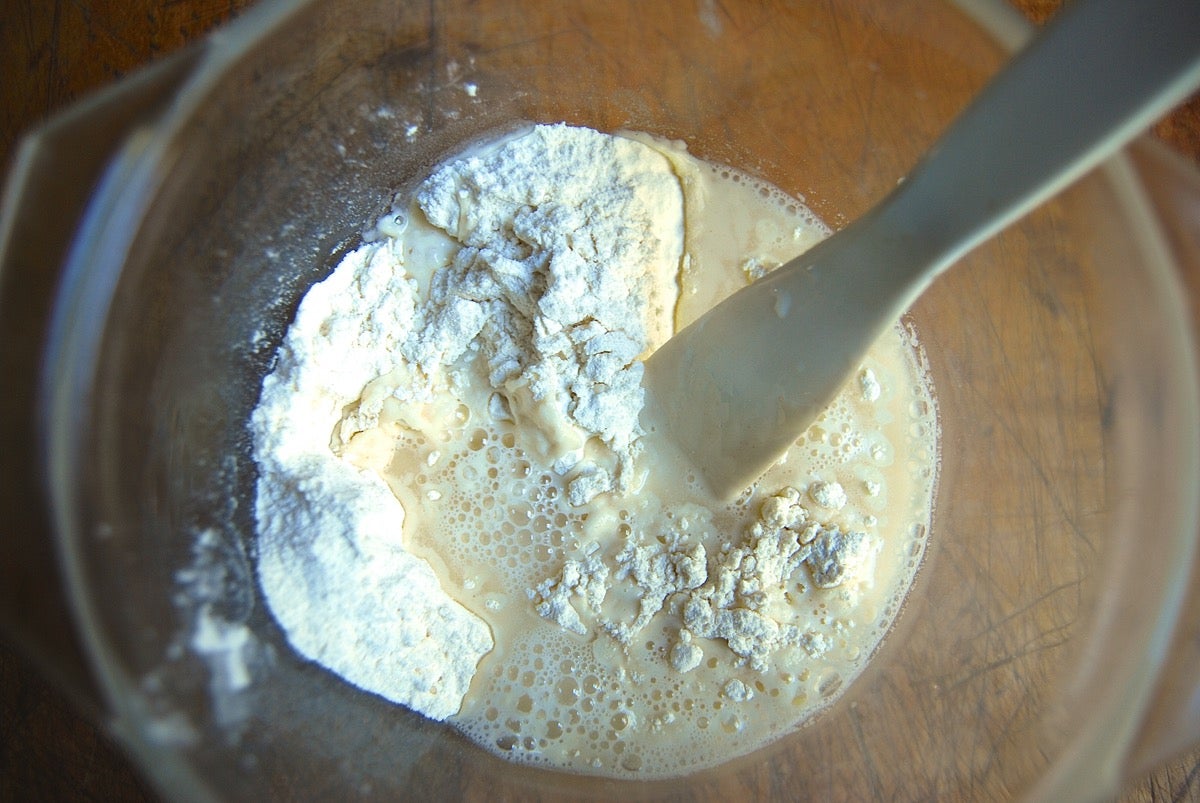
1. Make your dough with cool, not lukewarm, liquid (water or milk).
Why is this? You want the yeast to remain as dormant as possible for as long as possible, so it's less vulnerable to damage during the freezing process.
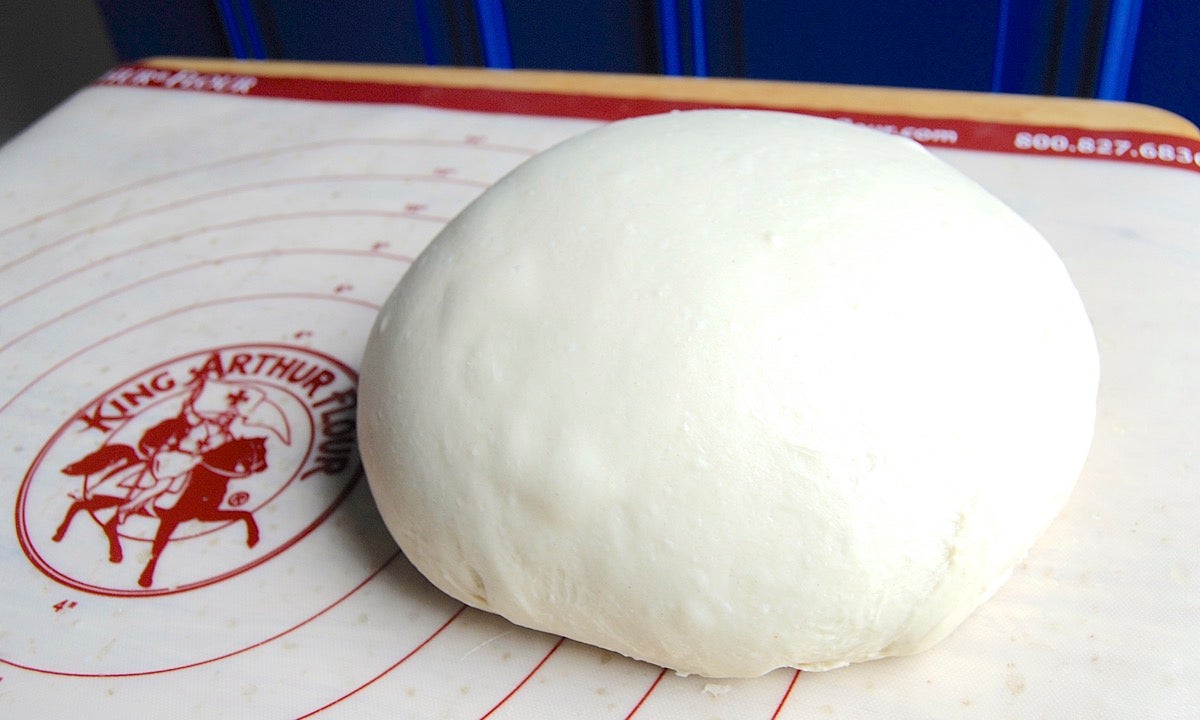
2. Shape rolls as soon as your dough is fully kneaded.
I'm making our guaranteed Soft White Dinner Rolls here. Potato and milk make them moist and tender, adding rich flavor as well.
Note: If I plan on freezing these rolls for longer than 2 to 3 days prior to baking, I increase the amount of yeast by about 20% – just to be safe.
As soon as you're done kneading the dough, shape it into rolls. That's right; you're not going to let the dough rise in the bowl first, as you usually would. Again, you want to minimize yeast activity.
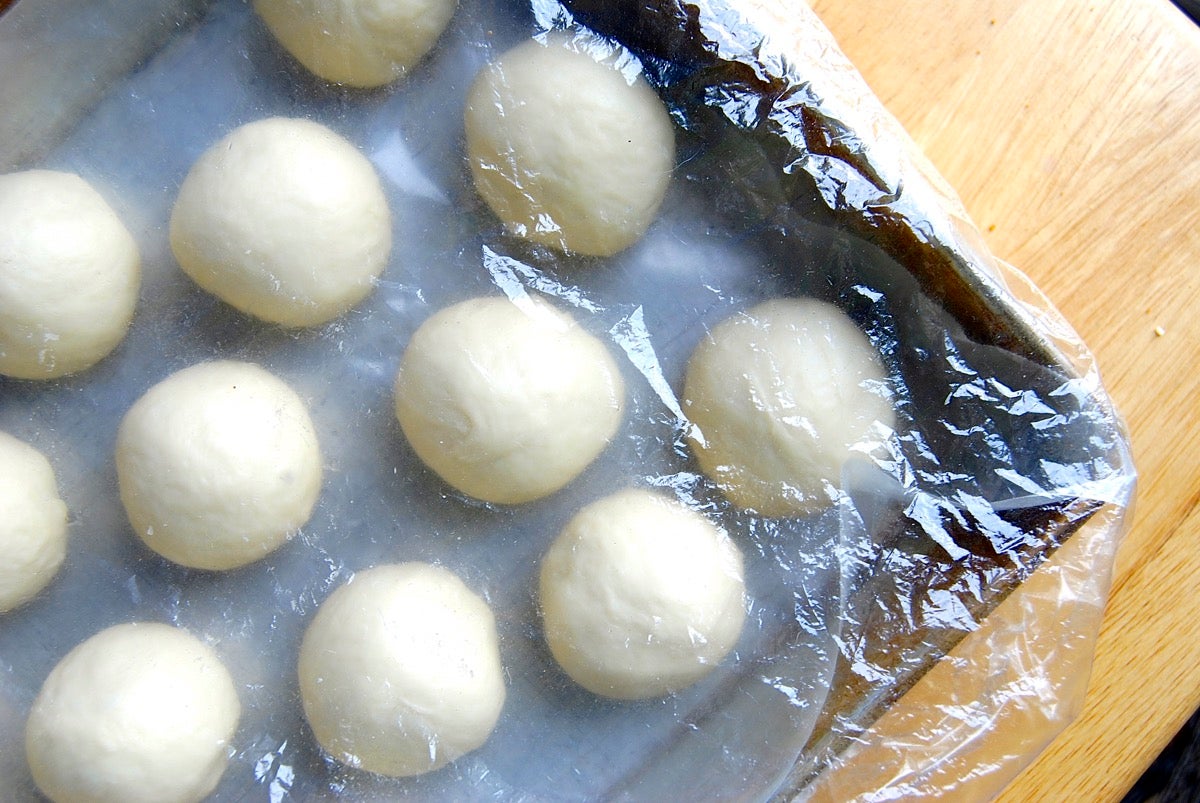
3. Shape the dough into rolls.
Do this quickly; remember, you don't want the yeast to start percolating.
Place the rolls in a pan lined with waxed paper or parchment. Cover the pan with plastic wrap or, as I've done here, a clear shower cap.
Place the pan in the freezer. Make sure to place it in the coldest part of your freezer, then leave the freezer door shut until the rolls are frozen hard. The more quickly they freeze solid, the better your final result will be. More on that later.
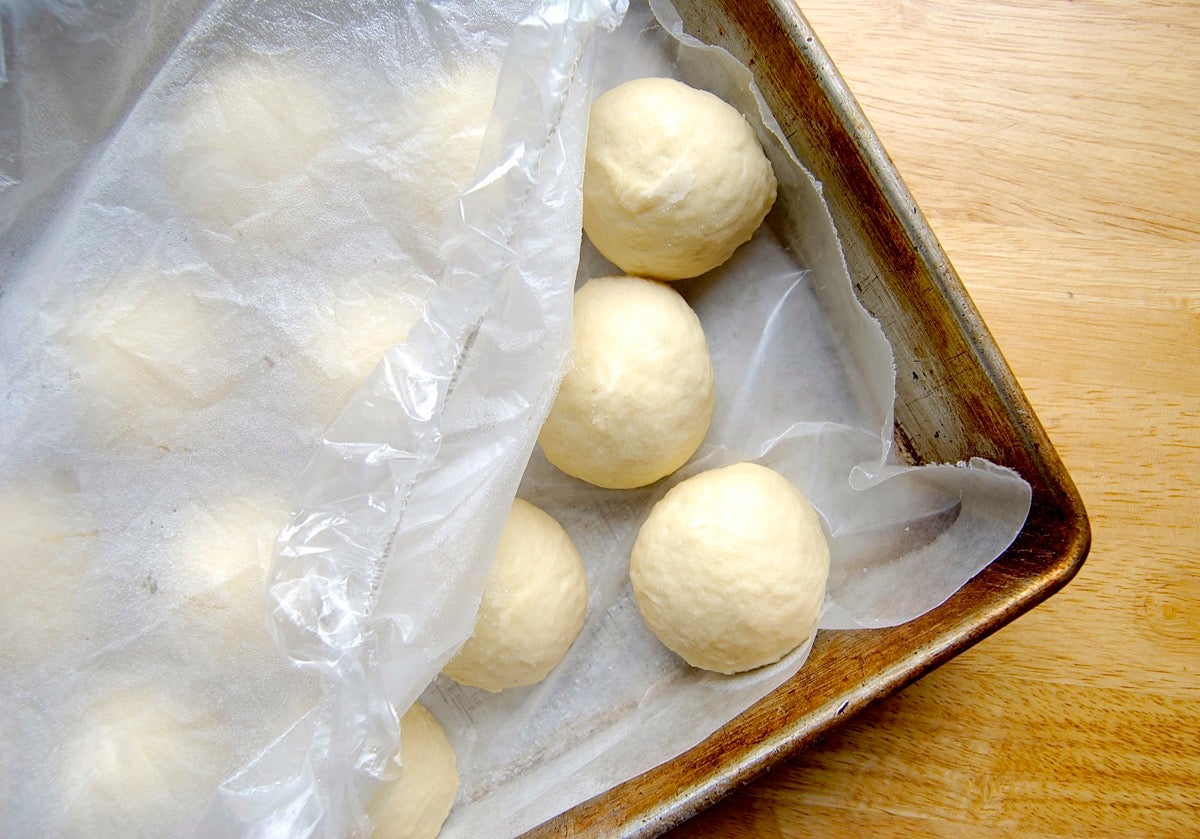
4. Freeze the rolls completely.
They should be rock-hard, with maybe a little frost on their surface. We're not just chilling here; we're FREEZING.
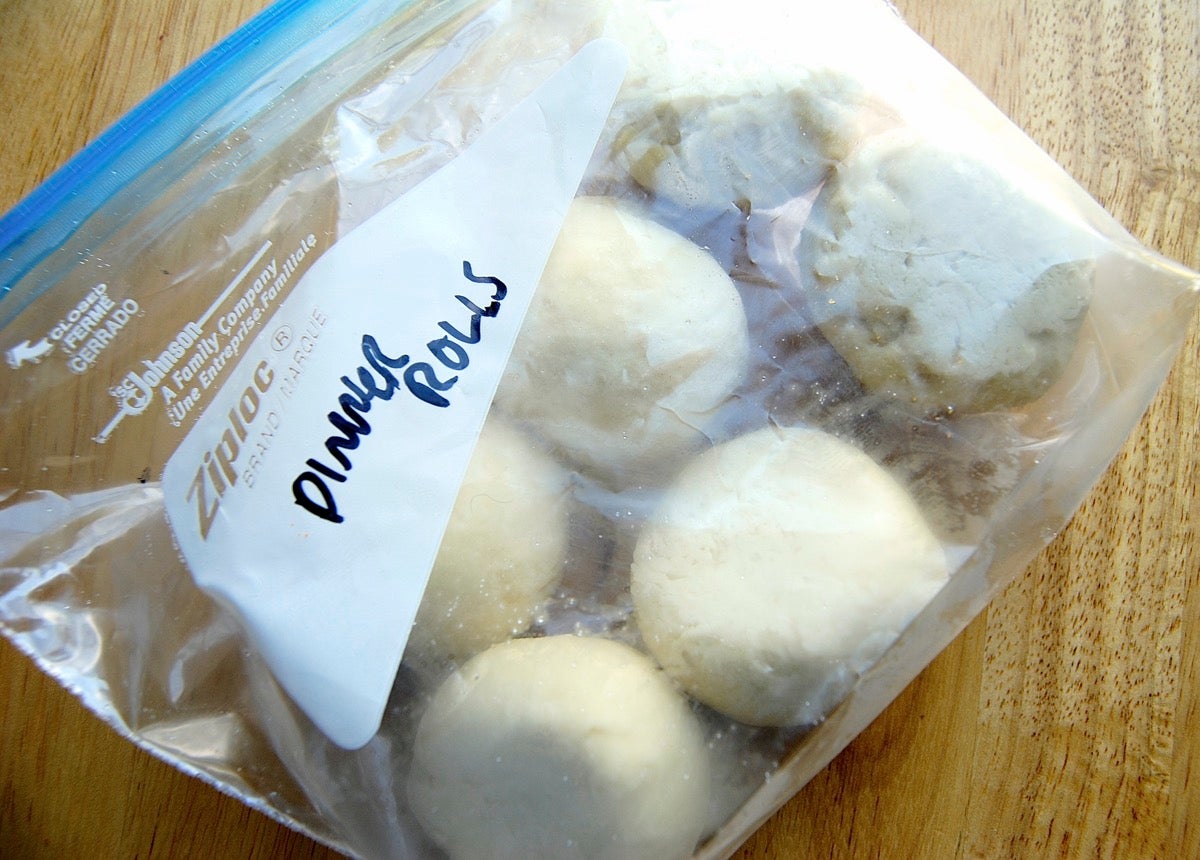
5. Bag the rolls and stash them in the freezer.
Frozen rolls should be good for a couple of weeks; longer than that, they start to noticeably lose their rising power due to yeast die-off; again, more on that later.
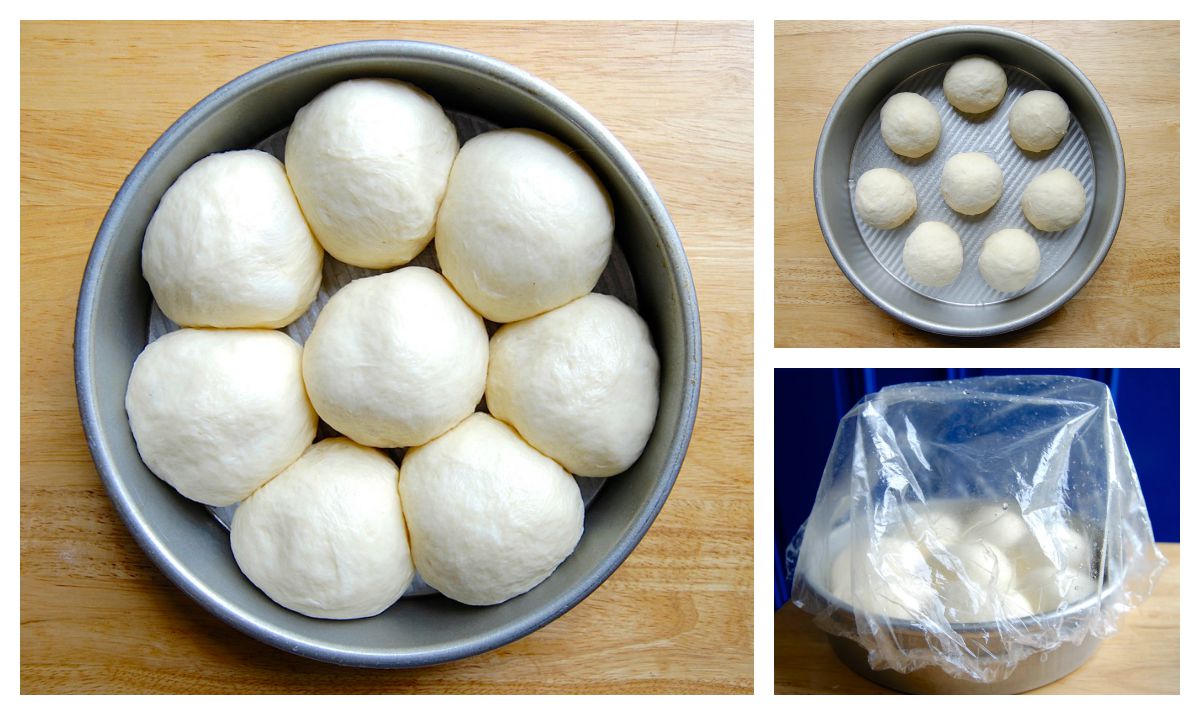
6. The day you want to serve freeze-and-bake rolls, remove them from the freezer.
Space the rolls in a lightly greased pan. Cover the pan (there's that handy shower cap again!), and let them rise.
You can hurry the process by putting the pan somewhere warm, like in a corner of your busy kitchen. Or slow it down by putting it somewhere cool, like on the back porch. But standard-size frozen dinner rolls, frozen for just a couple of weeks, will take about 4 to 5 hours to thaw and then rise at cool room temperature (about 65°F to 70°F).
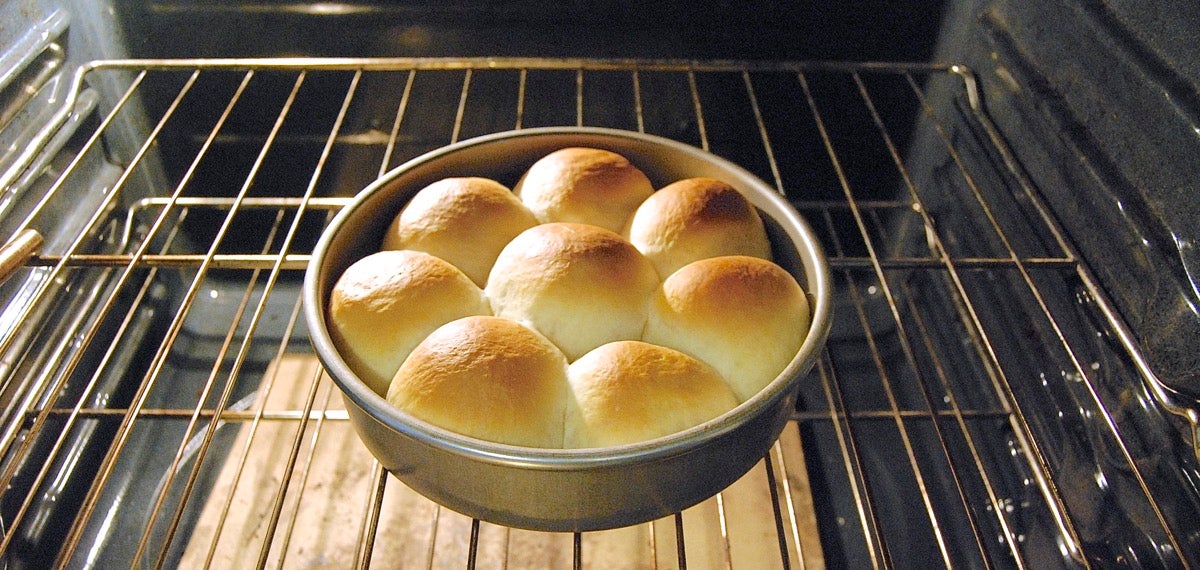
7. Bake the risen rolls.
Wow, these poor rolls are all by their lonely self! More typically for a holiday, they'd be surrounded by a green bean casserole, mashed squash, and scalloped potatoes.
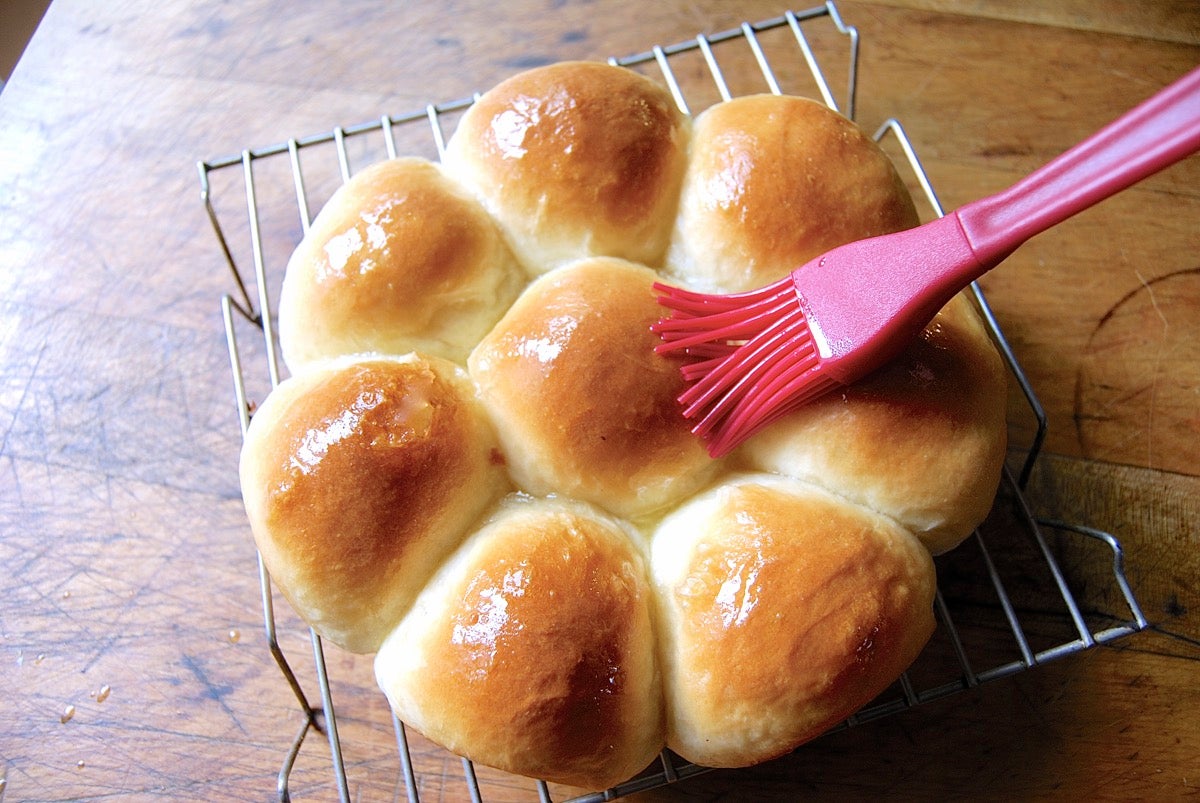
8. Serve freeze-and-bake rolls warm from the oven.
Brush them with butter. Just because.
OK, that was easy, right? Well, scientifically speaking, it's like that famous duck: serene up above, paddling like heck below the surface! For a relatively deep dive into yeast, freezing, and bread dough, keep reading.
I'm part of the EAT team here at King Arthur Flour. And while we do enjoy eating, the acronym stands for Education Advisory Team. Made up of various bakers/teachers/chefs from around the company, we make sure that the baking information and advice we pass along to you – via our baker's hotline, kids' classes, website, and printed materials – is accurate, consistent, and scientifically sound.
In starting this freeze and bake project, I turned to the team for advice on the best way to freeze yeast rolls.
Their answer? Don't do it!
But after rounds of emails, the team concluded that yes, you can freeze yeast rolls, given a few caveats:
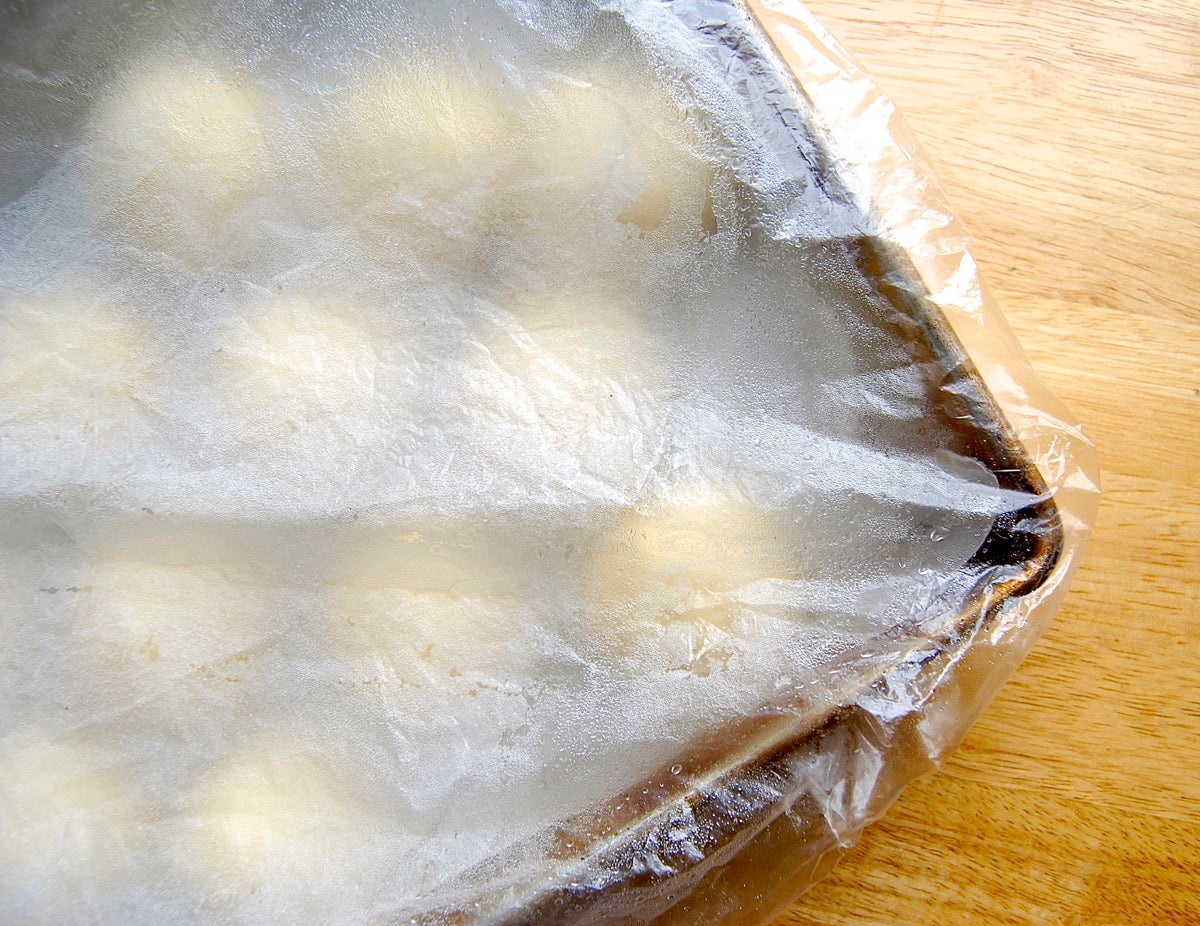
• Freeze for no longer than 2 weeks, 3 at the outside;
• Freeze as quickly as possible: in a 0°F freezer, without opening the door;
• Store where rolls will remain at a constant temperature, and completely frozen. This rules out self-defrosting freezers, which continually warm up, then cool down.
Why the cautionary notes? Well, some (but not all) of the yeast will be killed during freezing, thus lowering the rolls' rising ability. But the bigger culprit is ice crystals, which develop during freezing. And the longer it takes for the rolls to freeze solid, the larger the ice crystals will be.
So what, you say? Ice crystals cut through the rolls' gluten strands, creating a permeable network that allows CO2 from the developing yeast to escape. In other words – your rising rolls are full of (microscopic) holes. Not the best way to ensure a strong rise. In addition, those same ice crystals damage yeast – which is already stressed by being frozen.
Oh, and one more roadblock to high-rising rolls from the freezer: dead yeast releases a substance called glutathione, which acts as a natural dough relaxer. The more relaxed your dough, the less eager it is to rise upwards; it would rather spread outwards. The result? Rolls that don't rise as high.
Dying yeast. Ice crystals. Glutathione. It's a wonder frozen rolls turn out at all! But after explaining all of this to me in great detail, Jeff Yankellow, one of our company's most talented bakers, summed it up like this: "Now having said all that, if I were to freeze dough for 2 to 3 weeks I probably wouldn't change a thing to my process – although I would expect the leavening power to reduce over time."
My advice? Do what I've done here. Use our guaranteed recipe for Soft White Dinner Rolls. Freeze the unrisen, shaped rolls for no longer than 2 weeks. Let them rise for 4 to 5 hours, then bake.
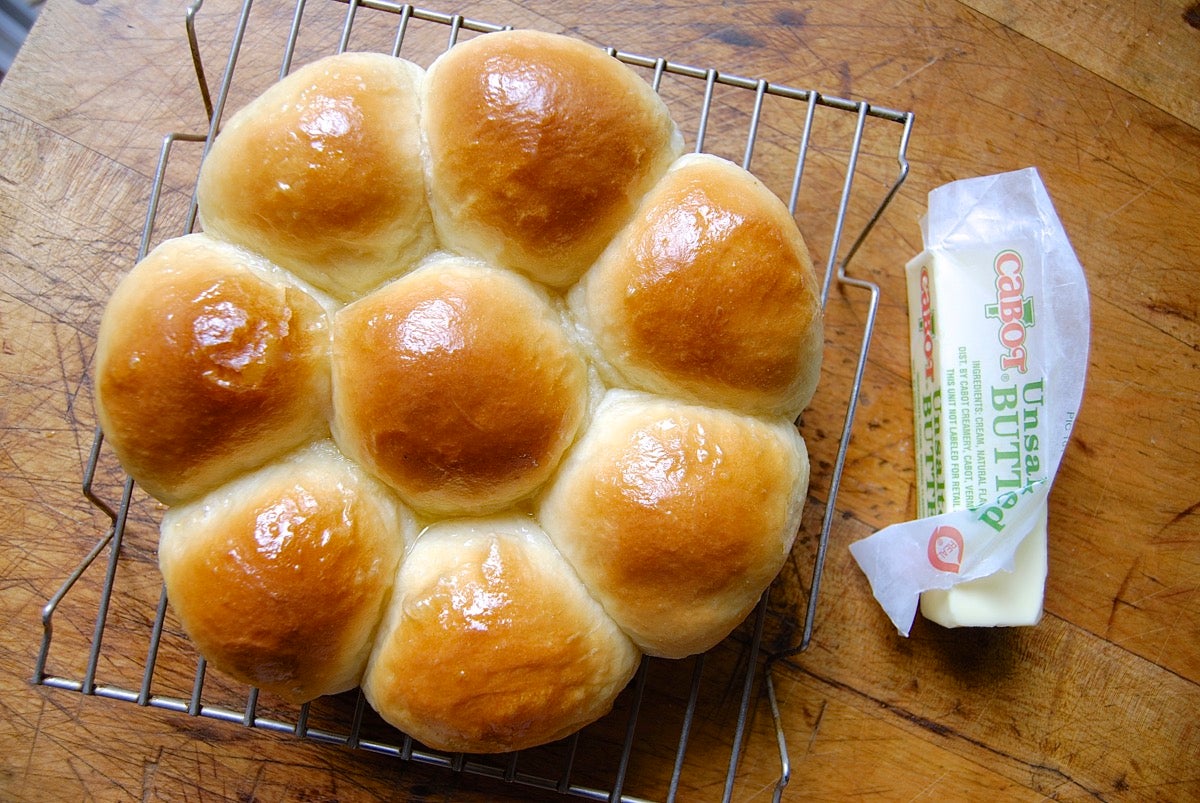
Trust me, you'll think you're enjoying absolutely fresh-made rolls.
Surely you can find the 20 minutes or so it takes to make and shape yeast rolls during those 2 weeks before Thanksgiving, right? After struggling for years with "When should I start the rolls?" – this is my favorite solution yet.
Now, what about using this technique with your own favorite dinner roll recipe? It should work just fine. We've found that the richer the roll (e.g., rolls made with milk, butter/oil, and/or eggs), the better the results. A "lean" dough (one made with simply flour, water, salt, and yeast) is more susceptible to freezer damage, since it's easier for ice crystals to form in this type of dough. Check out all our buns and rolls recipe and get freezing.
Can You Freeze Uncooked Brown and Serve Rolls
Source: https://www.kingarthurbaking.com/blog/2015/10/05/freeze-bake-rolls
Belum ada Komentar untuk "Can You Freeze Uncooked Brown and Serve Rolls"
Posting Komentar